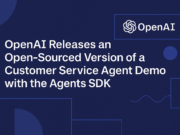Many startups and innovators struggle to sell their products once they launch.
Often, this is because while they love the idea for the product they have come up with, it is not actually solving a problem which the user perceives in their own lives.
But how is it possible that intelligent, hardworking teams can make such glaring errors?
Especially when they themselves can list all of the real, tangible benefits that their innovative solution brings?
The reason may well be that what they are trying to sell are “vitamins” rather than “painkillers”.
- Vitamins are a “nice to have”, but not really necessary. A person or a company can work perfectly well without it. In real life, yes there are fundamental vitamins that people will die if they do not have enough of in their bodies, but most vitamins are supplements and optional. In some cases, they do not even bring about a real benefit. These are products where someone really needs to be convinced to buy it and change what they are currently doing.
- Painkillers address a real problem which the individual or company is dealing with right now. Someone knows when they are in pain, and are willing to act now to relieve that pain. These are products where someone wants to buy it.
Unfortunately, most innovations at their core at vitamins. They may improve on something which currently exists, or offer a new way of achieving a goal.
Vitamins include most incremental innovations, such as a “faster way to achieve X”, or a “new formulation of Y”.
But someone will only agree to buy it if:
- They understand what it does
- They think they have the problem
- They see the benefits of the solution compared to what they are currently doing
- They think the price is fair to achieve those benefits
- They are willing to change what they are currently doing to achieve those benefits
- They are willing to pay for it
This can make it quite hard to sell, and requires a lot of effort.
Painkillers on the other hand are much rarer, because they focus on providing an immediate solution to something which someone is struggling with right now.
And even if your solution is not “perfect”, if it helps to solve that problem, it can be good enough.
Michael Seibel from Y-Combinator even talks about the ultimate type of pain or problem to find which startups and innovators should search for.
He calls it the “Hair on Fire” problem:
If your friend was standing next to you and their hair was on fire, that fire would be the only thing they really cared about in this world. It wouldn’t matter if they were hungry, just suffered a bad breakup, or were running late to a meeting—they’d prioritize putting the fire out. If you handed them a hose—the perfect product/solution—they would put the fire out immediately and go on their way. If you handed them a brick they would still grab it and try to hit themselves on the head to put out the fire. You need to find problems so dire that users are willing try half-baked, v1, imperfect solutions.
If you can find a customer and understand that they have their hair on fire, that is a real pain.
And if you can offer that person a painkiller, even if it is still an MVP, then you are much more likely to end up with a satisfied customer down the line.



















![Diablo 4 Mod Apk Newest Model [Unlimited Excitement]](https://digibytetoday.com/wp-content/uploads/2025/06/1750344127_1-final-180x135.jpg)
















